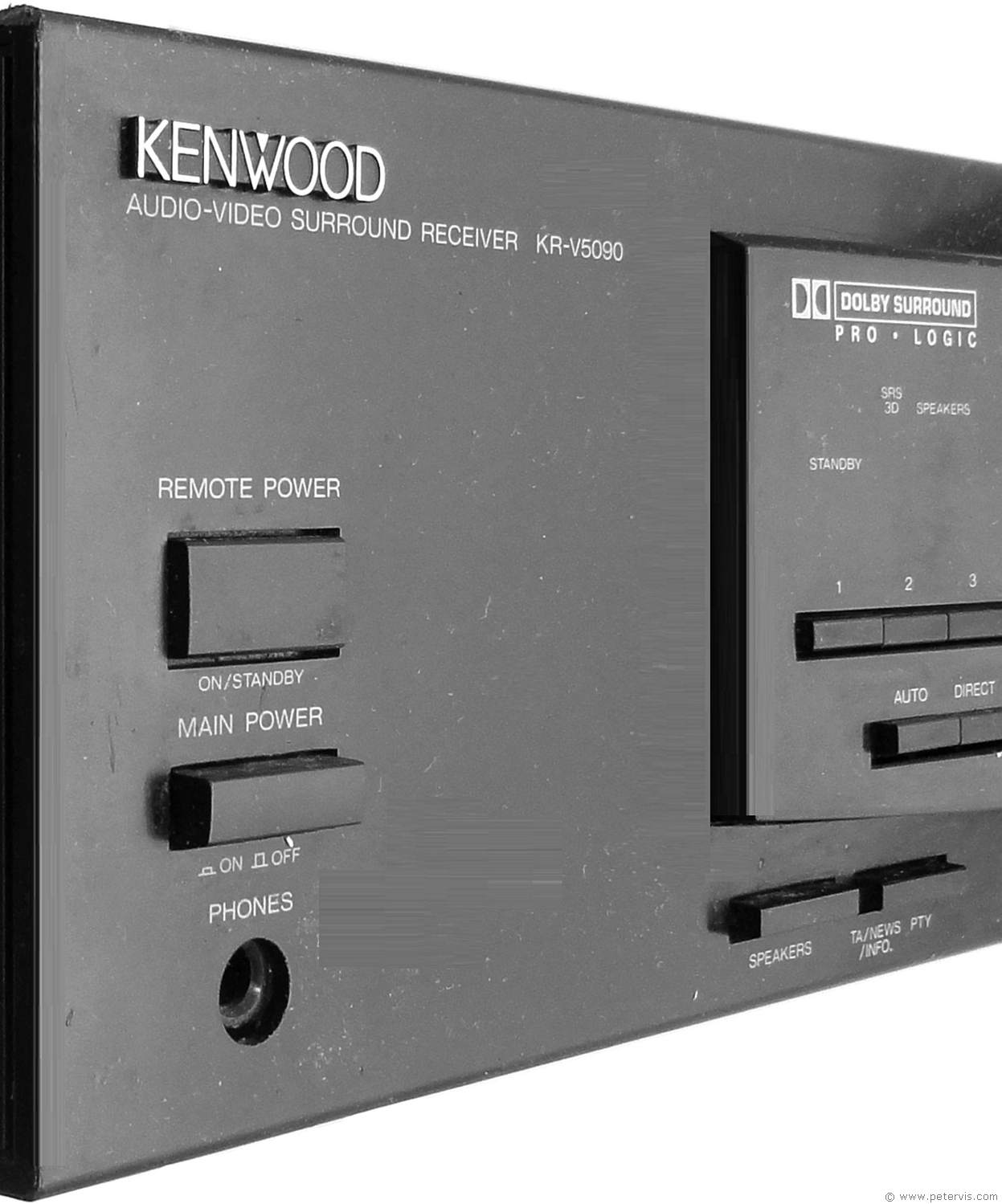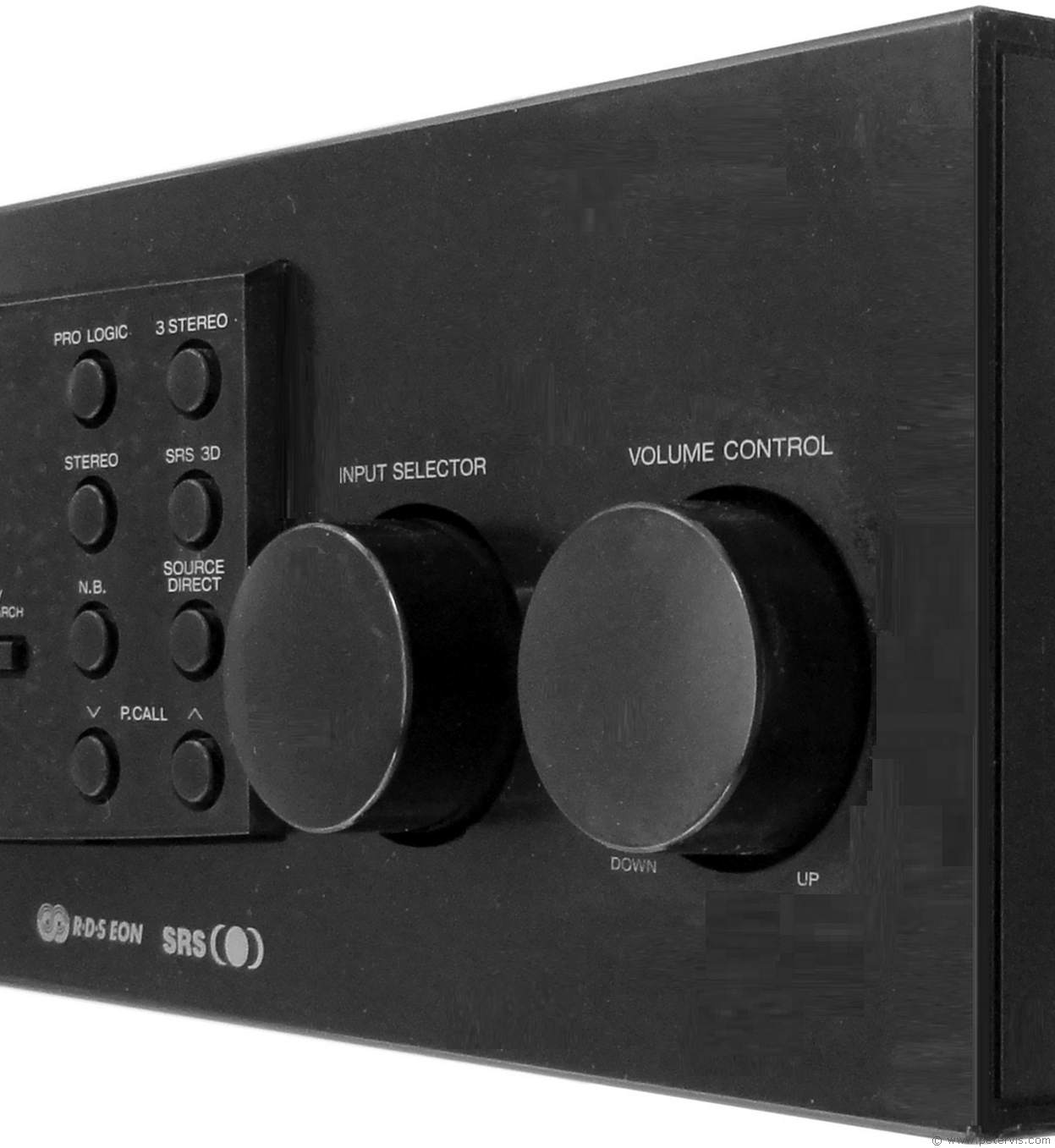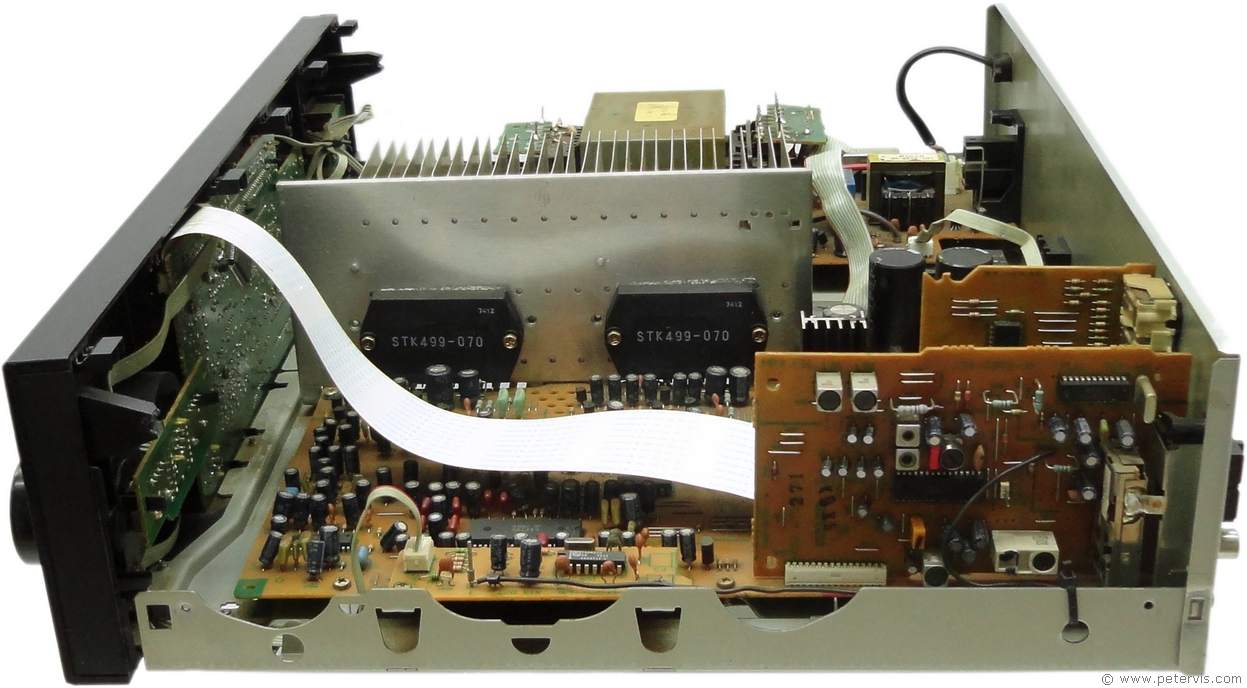Kenwood KR-V5090

The KR-V5090 was an audio-video surround receiver marketed in 1997, and manufactured by the Kenwood Corporation in China. Other similar looking amplifiers include KR-V6090, 106VR, and 105VR. The KR-V6090 was a 100-watt per channel system, whilst the KR-V5090 is 50-watts per channel. These are remote controlled surround sound systems with all five channels of equal power. As well as Dolby Pro Logic, it has Dolby 3 Stereo which provides proper acoustic positioning with just the front and centre speakers by utilising a special directivity enhancer circuit. It also has Sound Retrieval System (SRS) 3D, which was a special innovation that simulated 3-dimensional sound space with depth, sound field extension, acoustic image positioning, and widening. The enclosure has quite a large depth which is unusual, and the dimensions are 440 mm × 127 mm × 389 mm. Here are some of its features and specifications.
- Remote Control (RC-R0505)
- RDS
- FM/AM Tuner
- Phono (MM) input sockets
- Switched output (50-W max)
Review

This early amplifier is a lovely bit of electronic engineering by the Kenwood Corporation. What I love most about it is that the power amplifiers are based on the STK-499-070 modules manufactured by the Sanyo Corporation. These are insulated metal substrate (IMST) ICs, which I am a huge fan of as they sound extremely good. IMST modules are usually found in stereo amplifiers, however to find them in surround sound systems is not as common because they are no longer manufactured. Each IC has a pair of power amplifiers and in this amplifier design; they use a pair of these ICs. Looking at the circuit diagram, I discovered that the two power amplifiers in IC6 drives the front-left and front-right speakers. However in IC7 circuitry, one power amplifier is shared to drive the surround back speakers and the other power amplifier drives the front centre speaker. Each power amplifier has DC over-current detection circuitry so if the IC modules begin producing high DC voltages, then the speaker protection relays will not engage.
One downside of IMST modules is that they are extremely sensitive to shorts, and if you managed to short the speaker terminals, then chances are the module will be damaged and you will need to look for a replacement one. In this amplifier, the standby light flashes when the speaker output is short. Therefore, if your amplifier starts for a few seconds, and you see the front display for a few seconds, and then it shuts down and goes into standby with the standby light flashing, then chances are that it has serious damage. In my particular unit, the speakers were not connected, and it was exhibiting this behaviour, which after some troubleshooting and faultfinding, led to a damaged power amplifier module in the front channel circuitry. As a lowly publisher, I did not have the big bucks to buy a replacement IC, therefore I decided to remove the IC from the surround channel circuit and install it into the front channel circuit. With just the front channels operating in pure stereo, the sound quality is excellent providing you have a good pair of loudspeakers.
This is an old amplifier so there are bound to be some issues to consider when looking for one to buy. In this design, the top cover is thin metal that over time will have been dented and warped, though I am sure many owners will have kept their units in mint condition. My unit also had huge amount of dust and soot covering the boards, and even after cleaning, it was not all gone. The fluorescent display had also faded, and even after adjusting the brightness to full it was barely visible. For some reason, the previous owner had also cut the mains wire off. To make matters worse, the courier had thrown the box and the plastic feet had snapped off, the top cover supports had snapped, and the standby power supply board had a crack. Hence, before I could even address the original electronic fault issue, I had to first sort out the damage caused by poor delivery.
Price/eBay

The KR-V5090 and KR-V6090 are often for sale on eBay and the price can vary considerably depending upon condition. What makes this amplifier unique is the Sanyo hybrid amplifier modules and therefore a unit in good working order and mint condition can fetch well over sixty pounds and more on a good day. I would envisage a unit in mint condition in its original box with the remote control, manual, and packaging, selling for well over one hundred pounds.
Unfortunately a faulty unit that requires a replacement power amplifier IC will not be worth much as repairs are time consuming and expensive. To replace this IC, one has to take the amplifier apart to gain access to the underside for soldering/desoldering and that takes time and effort. Consequently, a faulty unit would not be worth much. In the following pages of this multi-page article you can see the electronic engineering of this amplifier when I took it apart for repair.
This Article Continues...
Kenwood KR-V5090Inside View
Power Amplifier IC Modules
STK499-070
Main Board and Chipset
Phono Preamplifier Circuit
Front Panel Board
Standby Power Board
Tuner Board
NJU7313AL
LA2786
M62430FP
SAA6579
Power Supply
Back Sockets
